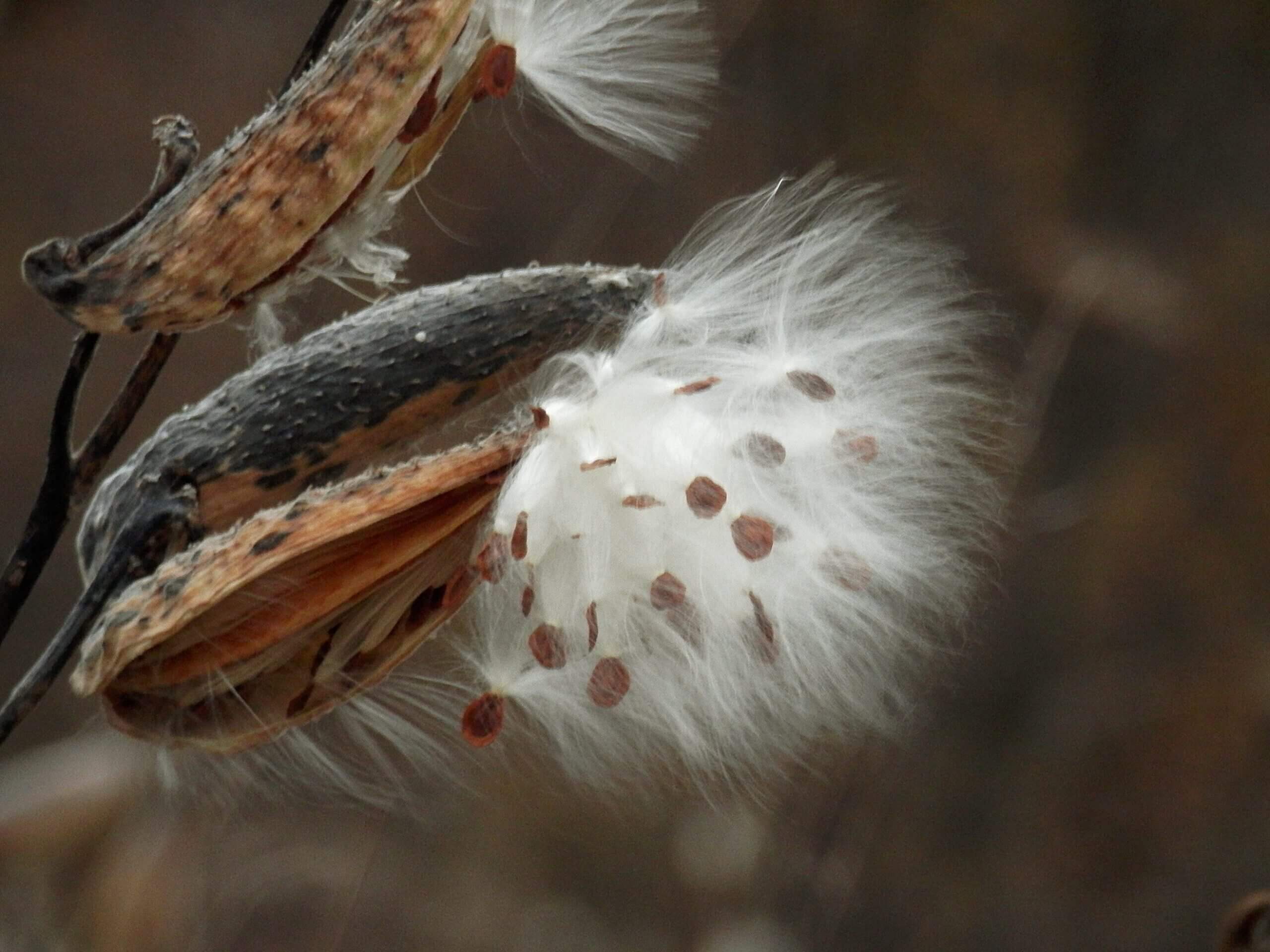The genus name, Asclepias, derives from the Greek god and healer, Asclepios. The Roman god of healing and medicine was named Aesculapius, and there was good reason for naming this genus of plants after this god. The plants contain organic compounds that have been used to treat various ailments and conditions of the heart and nervous systems, as well as the stomach and intestines. All parts of the plant contain cardiac glycosides and cardenolides, specifically one called oleandrin, which are concentrated in the milky latex sap.
From ancient times, these compounds have been used as heart tonics, as diuretics, and emetics. Theses toxic compounds are fatal when ingested in large quantities, so they were also used as poisons on arrowhead tips, to kill mice and rats, and to poison people. In modern days, they are used to treat congestive heart failure and cardiac arrhythmia because they can increase the output force of the heart and decrease the rate of contractions with actions based on a cellular level.
Oleanders are in a family (Apocynaceae) that is closely related to milkweeds, and there are famous stories of death by “white oleander.” Some other plants that contain cardiac glycosides are: foxgloves (digitalis spp.), hellebores, lily of thev, and some species of kalanchoe. The Cane Toad (Bufo marinus) also produces this deadly toxin. Humans have used parts of these plants for medicinal purposes and have found many other beneficial uses as well.
Asclepias tuberosa, native to the eastern US, is also known as pleurisy root; the root was used by early colonists to treat inflammations of the pleura (a thin membrane covering the lungs). The milky sap was also used as an emetic and a diuretic.
Asclepias curassavica, Mexican or Tropical milkweed, and sometimes also called bloodflower, is known by the people in its native range as soladitos; it was used to treat scorpion stings and to cauterize wounds.
Asclepias syriaca (an eastern species) and Asclepias speciosa (the western counterpart) were both used by the native peoples as a food and fiber plant. Both these species are large in stature, with big leaves emerging early in spring, large clusters of fragrant flowers in early summer, and large fuzzy seed pods forming later in summer. The tender young leaves, as well as the newly formed seedpods, were cooked and eaten as a vegetable.
Later in the season, when the leaves had dried and fallen, the now-bare stalks were harvested for the fibers, from which a very fine twine was made.
Early colonists also collected the floss, or silk, (the tiny “parachutes” attached to each seed), spinning it to make candlewicks. They called the plants “silkweeds”!
During World War II, the US government set up milkweed farms in order to harvest quantities of the silken floss as a substitute for kapok fibers. The “silk” was used as a filling in flying suits and life jackets.
In more recent times, milkweeds have been the subject of eradication campaigns on roadside ditches and field edges in the Midwest and in many grasslands and fields through the West where cattle are pastured because the plant is poisonous to most herbivores.
Most vertebrates and the smart herbivores, such as deer, know to avoid this plant; they never browse it. But I know from the experience of growing thousands of these plants over the years, that the small seedlings are eaten down to a nub by rats, which usually kills the little plants. Lately, I’ve also noticed that rats will eat the seeds, pulling stalks close to the ground to get to the seedpods, and then leaving nothing but the silk and the empty seedpod. Roman snails (the large introduced garden snail) also eat the plants! How do these creatures manage the toxins? Are they self-medicating and deriving a benefit from the toxic compounds in the plants?
The toxins protect a number of invertebrate species besides the Monarchs that associate closely with the milkweeds, and they all exhibit some combination of the warning colorations of red, orange or yellow, with black and white. There are large and small red and black seed bugs (family: Lygaeidae) that feed on the milkweed seeds, and a bright red milkweed longhorn beetle (Family: Tetraopes) that feeds on the foliage. There’s also a milkweed tussock moth (Family: Lymantriidae) whose colorful spiny larvae feed on the plants, and three species of tiger moths (Family: Arctiidae) that use asclepias as a larval host plant.
Besides the creatures that feed on milkweeds, there are numerous other arthropods that visit the flowers regularly. The most spectacular are our giant spider wasps (Family: Pompilidae) with blue-black bodies and bright orange wings that they constantly flick while hunting for prey. Spiders, especially crab spiders, position themselves amongst the flower clusters to wait for prey, and predatory arthropods such as mites, beetles, ants, lacewings and some “true” bugs all hunt on milkweed plants.
Many of these creatures also predate on the Monarchs; eggs and early instars are eaten by invertebrate predators, at which stage the milkweed toxins don’t offer much protection. The benefit of the toxin is more obvious in the later instars, when visual vertebrate predators like birds are a bigger problem. By these later stages, the larvae have eaten enough milkweed to build up the levels of toxins in their bodies, which is then passed on to the adult in the pupal stage. Even then, the individual doesn’t necessarily benefit, as the distastefulness of their bodies has to be learned by the predator, but it does benefit the species, and as well as all sorts of Mullerian mimics who assume the same warning colorations as the Monarchs.

